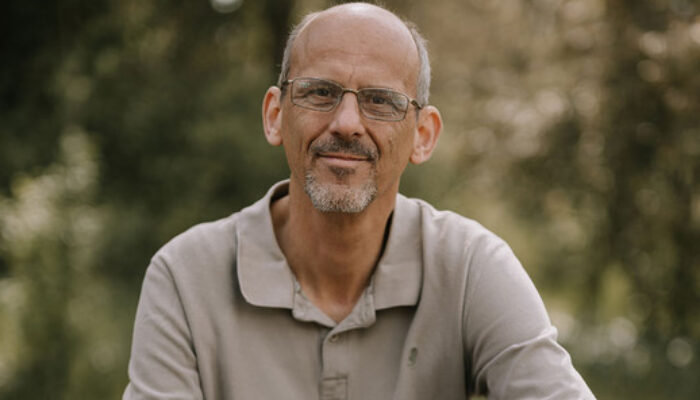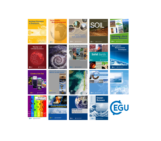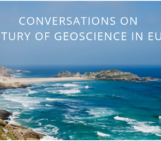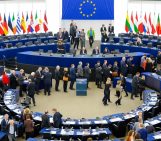
Hello Peter, thank you for taking the time to speak with us and welcome to your new role as President of EGU! Can you tell us a little about yourself and what led you to this role?
I am a professor of General Geology at the University of Potsdam in Germany. Originally from the Netherlands, I consider myself European. After completing my PhD at the Free University in Amsterdam, I did a postdoc in Australia and then accepted a position as an assistant professor in Grenoble, France. I stayed there for over 20 years, eventually becoming a full professor. In 2020, I moved to Potsdam. My research focuses on long-term landscape evolution and the controls on erosion rates and relief development over geological timescales. I use quantitative methods such as thermochronology and cosmogenic nuclides to resolve erosion histories and combine these results with numerical models to examine potential controls on erosion and relief development. Currently, I am particularly interested in glacial erosion and its effects on mountain relief, studied through an ERC Advanced Grant project.
My involvement with EGU began about ten years ago when I was elected president of the Geomorphology division until 2019. In 2020, after the outbreak of the pandemic, I took on the role of chair of the Programme Committee to organise the General Assemblies 2021 and 2022.Their preparation and organization were particularly challenging considering everything was new and unknown terrain. While EGU21 was the first fully online General Assembly, we held the first hybrid General Assembly in 2022 despite having to change the dates at short notice. These experiences laid the foundation for the current development of a fully hybrid General Assembly. After two difficult years, I took a break but felt ready to return to EGU in a leadership role last year, leading to my candidacy for the presidency. I am grateful for the trust the members placed in me.
Now that you have started your term as EGU President, what are your goals? And what are your immediate priorities now that you have assumed this new role?
I became president a year earlier than expected under unusual circumstances, as the council voted to dismiss the previous president. My immediate priority is to start leading EGU towards a brighter future. This involves identifying and rectifying weaknesses in our governance structure and procedures that became apparent during the recent difficult period. We are working hard on this with the Executive Board and Council. A major goal for my term is to update the strategic vision of the Union. We invested significant time and energy into a governance review and strategic vision development in 2019-2021. While many recommendations have been implemented, others were side-lined during the pandemic and subsequent challenges. It is now time to update our strategic vision, decide where we want to be in 5 to 10 years, and plan how to get there. The world is evolving rapidly in scientific publications and meetings, and we aim to lead this evolution rather than follow it.
Other important goals include promoting equality, diversity, and inclusion within the Union. Although much progress has been made, there is still room for improvement. We also need to enhance geographic diversity within the EGU Council, committees, and officers. Additionally, I aim to strengthen EGU’s activities in education, outreach, and policymaking to highlight the critical contributions geoscientists can make to solving society’s most pressing problems. Despite the increasing importance of geoscientists, interest in geosciences and STEM fields among prospective students is declining. Finally, I want to expand the conversation with our Early Career Scientists, ensuring they feel well represented and their concerns are integral to EGU discussions.
EGU is an organization that covers 22 scientific divisions and several research areas beyond these divisions. What are your goals for the next few years regarding the scientific divisions, and what are your thoughts on promoting interdisciplinary research within geosciences?
The disciplinary organisation of EGU into scientific divisions is historic, and many members feel a strong attachment to their division. However, the significant differences in size and scope of the divisions create an eclectic ensemble. The idea of streamlining the division structure was considered during the Governance Review but was ultimately set aside. While I am open to modifications supported by the membership, I am not sure we are ready to revisit this question.
Many geoscientists continue to conduct excellent disciplinary research, as demonstrated by our journals and General Assembly sessions. However, it is crucial to actively promote interdisciplinary research, which often requires innovative and “outside the box” thinking. The “Inter- and Trans-disciplinary Sessions” (ITS) Programme Group, introduced several years ago, has become one of the most popular at the General Assembly. Similarly, some of our interdisciplinary journals are very successful. In short, while both disciplinary and interdisciplinary research deserve visibility, promoting inter- and transdisciplinary research still requires active support.
What do you see as the biggest challenges facing the geosciences community today, and how do you hope to address them?
At the societal level, geosciences are central to addressing critical problems such as anthropogenic climate change, the biodiversity crisis, natural hazards, the energy transition, and sustainable use of geo-resources. Unfortunately, evidence-driven solutions are often hampered by public disinformation and political populism. As geoscientists, we need to be more outspoken and find new ways to provide impactful, factual information to policymakers and the public. This is a daunting task, but our Education and Outreach committees, along with the Policy Working Group, are dedicated to it. We can also strengthen our efforts through joint actions with sibling geoscience societies and other scientific organisations.
In terms of scientific practice, the rapid development of artificial intelligence and massive datasets presents both challenges and opportunities. Open Access models are rapidly changing the publication landscape, and we need to find the best model for our needs. Similarly, scientific meetings are evolving to become more inclusive and sustainable. We need a forward-looking strategy to position EGU in this changing landscape.
What advice would you give to our members, especially Early Career Scientists, to make the most of their involvement with EGU?
EGU is an excellent organisation to gain volunteer experience and build an international network, as it is a member-driven society with numerous opportunities for involvement. If you are interested in becoming active, it is easy to start as a division officer or early career representative. Many people begin their involvement this way and can move on to committees or stand for election as division president. My advice is not to be shy about getting involved; most divisions and committees are always looking for new volunteers, so there is always something interesting to do. I can assure you that the experience will be rewarding.



